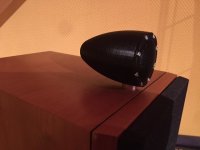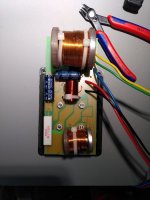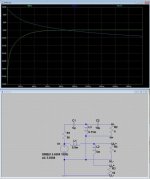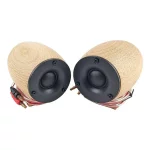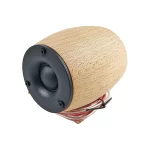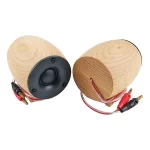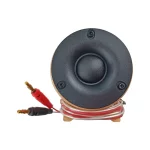I have a pair of B&W P6’s with damaged tweeters. Apparently it’s common for the ferro fluid to thicken up over time to the point where the tweeters no longer work. Never heard of this before but this looks to be the case for my pair.
The speakers are long past warranty but B&W does have replacement parts. However at $135.00 US per single unit, plus shipping and duty I’m looking at $300+ to repair. Given that I only paid $700 for the speakers back in the late 90’s (got them used) that’s a bit of a hard pill to swallow.
So my question is, has anyone successfully replaced the tweeter on a P6 with something other than B&W parts?
Thanks
The speakers are long past warranty but B&W does have replacement parts. However at $135.00 US per single unit, plus shipping and duty I’m looking at $300+ to repair. Given that I only paid $700 for the speakers back in the late 90’s (got them used) that’s a bit of a hard pill to swallow.
So my question is, has anyone successfully replaced the tweeter on a P6 with something other than B&W parts?
Thanks
I just noticed this is perhaps in the wrong forum.
Can a moderator please move this to the multi-way forum?
Thanks
Can a moderator please move this to the multi-way forum?
Thanks
see this tread , ask goudey what tweeter he used to replace bw cdm 1 se , it´s the same of your P6
http://www.diyaudio.com/forums/multi-way/32590-b-w-cdm-1-se-inside-cables-replacement.html
http://www.diyaudio.com/forums/multi-way/32590-b-w-cdm-1-se-inside-cables-replacement.html
I also use a pair of B&W CDM 1 SE. For me a great improvement came about from disconnecting the internal tweeter and placing a ribbon tweeter on top, with its own crossover. I don't think replacing wires could make the same degree of improvement that the new tweeter did.
Hi,
These will get them working, and look the part, but how well who knows ? :
HiVi TN28 Fabric Dome Tweeter 297-409
Zaph didn't like them much, Zaph|Audio
but perhaps that is because of the very wide dispersion lower down dropping
output and increasing distortion, they do need crossing 3KHz or higher,
which should be the case with the B&W's, traditionally c/o high.
Sometimes you have to bite the bullet with the choices available.
The hiccup around 7/8KHz isn't terrible, just shouldn't be there.
rgds, sreten.

Response mounted on top of a cabinet, some internal tweaking around 2KHz.
Solid 90dB+ sensitivity, and flat given the unusual mounting arrangements.
These will get them working, and look the part, but how well who knows ? :
HiVi TN28 Fabric Dome Tweeter 297-409
An externally hosted image should be here but it was not working when we last tested it.
Zaph didn't like them much, Zaph|Audio
but perhaps that is because of the very wide dispersion lower down dropping
output and increasing distortion, they do need crossing 3KHz or higher,
which should be the case with the B&W's, traditionally c/o high.
Sometimes you have to bite the bullet with the choices available.
The hiccup around 7/8KHz isn't terrible, just shouldn't be there.
rgds, sreten.

Response mounted on top of a cabinet, some internal tweaking around 2KHz.
Solid 90dB+ sensitivity, and flat given the unusual mounting arrangements.
Last edited:
I just replaced a (one) tweeter for my B&W cdm-7SE with Vifa OC25SC65-04 its spec very close to original B&W tweeter part# ZZ03123. It s fit nicely with some mod. Sound very similar after a week break in compare to another speaker that still an original tweeter and nicer thing : it cost only $10 each from Part Express
Dried up ferrofluid in tweeters is very common. It's only oil, iron oxide particles and a binding agent. It evaporates after 10-15 years leaving thick gunge!
I stripped mine out on ancient Monitor Audio R300. I may replace it as an experiment, since it ought to damp the sound a bit. About £10 a bottle. Evidently, you fill 3/4 of the gap, then when you refit the voice-coil, it's about right. Most tweeters disassemble easily enough. Most of them, like Morel, can take a replacement voice-coil anyway.
Troels Gravesen removes it as a matter of course when building speakers in this picture guide:
Vifa C17WH-
In the last resort, replacement tweeters are usually standard sizes. You match impedance like 8 ohm, sensitivity like 90dB or whatever the speaker is and find one the same size face plate and cutout hole. Not hard. 😀
I stripped mine out on ancient Monitor Audio R300. I may replace it as an experiment, since it ought to damp the sound a bit. About £10 a bottle. Evidently, you fill 3/4 of the gap, then when you refit the voice-coil, it's about right. Most tweeters disassemble easily enough. Most of them, like Morel, can take a replacement voice-coil anyway.
Troels Gravesen removes it as a matter of course when building speakers in this picture guide:
Vifa C17WH-
In the last resort, replacement tweeters are usually standard sizes. You match impedance like 8 ohm, sensitivity like 90dB or whatever the speaker is and find one the same size face plate and cutout hole. Not hard. 😀
Dried up ferrofluid in tweeters is very common. It's only oil, iron oxide particles and a binding agent. It evaporates after 10-15 years leaving thick gunge!
Yup. If you can strip the tweeter down to get the diaphragm and any plastic parts off, then a soak in petrol or commercial degreasing solvent should clear the gap. Wipe the VC gently with a cotton bud in petrol to clean that up, then reassemble. Ebay should sort you out for some new ferrofluid.
B&W tweeter replacement - very easy
Hi
I am a specialist with B&W. Basically, it is a very easy task to fix any tweeter. If you know how to use screwdriver and basic soldering I CAN DO IT. All B&W tweeters they have 26mm (inside) voice coil. There are only 2 different voice coils. 1 with foam ring 2 without it. Voice coil with diaphragm they are available on my eBay shop and they send worldwide. trueprices | eBay
Hi
I am a specialist with B&W. Basically, it is a very easy task to fix any tweeter. If you know how to use screwdriver and basic soldering I CAN DO IT. All B&W tweeters they have 26mm (inside) voice coil. There are only 2 different voice coils. 1 with foam ring 2 without it. Voice coil with diaphragm they are available on my eBay shop and they send worldwide. trueprices | eBay
Hi
I am a specialist with B&W. Basically, it is a very easy task to fix any tweeter. If you know how to use screwdriver and basic soldering I CAN DO IT. All B&W tweeters they have 26mm (inside) voice coil. There are only 2 different voice coils. 1 with foam ring 2 without it. Voice coil with diaphragm they are available on my eBay shop and they send worldwide. trueprices | eBay
Hi I am very interested but could not find the P6 diaphragm in your shop. Can you please help me? I recently bought a set of P6 with one tweeter that is dented and cracked :-( I am going to repair the myself but I am looking for parts. So if anyone has a broken tweeter or any parts relating the tweeter grilles etc I am very interested.
Cheers Cor
I too cannot find tweeters for B&W P5 in konradbanaszewski's shop :-(
I will try to repair my tweeters by cleaning out the dried ferrofluid and replacing it. Any tips for how to get the tweeter out and perform this operation would be much appreciated.
I will try to repair my tweeters by cleaning out the dried ferrofluid and replacing it. Any tips for how to get the tweeter out and perform this operation would be much appreciated.
I have a pair of P5 in great shape, but am apprehensive about the tweeter and whether or not they are worth hooking up right yet. Can only presume the fluid is dried, but hope that the tweeter is still functional and only in need of a swap/cleanout. Interested to see how this plays out.
This turned out to be pretty easy to do.
1. Take out the tweeter by turning it about 1/4 turn. Once you do that you need to pry out the tweeters carefully (it is a tight fit)
2. Disconnect the tweeter; handy to take a photo of the connection before you do this
3. Take out the spring clip which basically enables you to separate the tweeter into four parts (frame, diaphram, magnet, spring clip)
4. Clean the gap in the magnet. I used sticky tape to do this with some help from a paperclip. This took a while...at least 30 minutes per tweeter. It was really stuck and gunked up. You will need to do this patiently.
5. Add the ferrofluid, reassemble your tweeter, and install in cabinet. As mentioned above, the tweeter is a very precise fit in the cabinet so rather than do this while the speaker was standing, I found it easier to lay the speaker down...this way I wasn't worried about dropping the tweeter while finding the right way to put it in.
Before I did this, I used test tones and found that the speakers were not producing any sound at 4KHz or higher...the crossover for tweeters is 3KHz so this makes sense. It also means that the tweeters were not doing anything...no wonder I had not enjoyed these speakers for 10 years... After the little surgery, I can easily hear beyond 12KHz and love listening to music on these speakers again.
1. Take out the tweeter by turning it about 1/4 turn. Once you do that you need to pry out the tweeters carefully (it is a tight fit)
2. Disconnect the tweeter; handy to take a photo of the connection before you do this
3. Take out the spring clip which basically enables you to separate the tweeter into four parts (frame, diaphram, magnet, spring clip)
4. Clean the gap in the magnet. I used sticky tape to do this with some help from a paperclip. This took a while...at least 30 minutes per tweeter. It was really stuck and gunked up. You will need to do this patiently.
5. Add the ferrofluid, reassemble your tweeter, and install in cabinet. As mentioned above, the tweeter is a very precise fit in the cabinet so rather than do this while the speaker was standing, I found it easier to lay the speaker down...this way I wasn't worried about dropping the tweeter while finding the right way to put it in.
Before I did this, I used test tones and found that the speakers were not producing any sound at 4KHz or higher...the crossover for tweeters is 3KHz so this makes sense. It also means that the tweeters were not doing anything...no wonder I had not enjoyed these speakers for 10 years... After the little surgery, I can easily hear beyond 12KHz and love listening to music on these speakers again.
I have a pair of P6 (from new) and decided to have a look, mine are the metal units rather than plastic.
Easy to remove from the speaker and after prising off the grille and propping up on some plasticine to keep them upright there are only four screws to remove and the cone & voice coil assembly can be lift up by easing something thin between the assembly and the surround, remembering that the gasket might try to hold the two together.
The thing to be beware of is that tension in the lead out wires can prevent you lifting the coil assembly more than a couple of mm, so gently push the wires into the mounting tube to take the tension off then wiggle the assembly a bit higher. Rinse and repeat. Just take your time and do it slowly.
It turned out that the fluid in mine was still good, not only there, but not substantially different in thickness to that in the little bottle I'd purchased to replace it having convinced myself I needed to...
Service diagrams are available here: https://bwgroupsupport.com/manuals/bw-service
Ferrofluid came from here: https://speakerrepairshop.nl/en/ferrofluid/g-30
Easy to remove from the speaker and after prising off the grille and propping up on some plasticine to keep them upright there are only four screws to remove and the cone & voice coil assembly can be lift up by easing something thin between the assembly and the surround, remembering that the gasket might try to hold the two together.
The thing to be beware of is that tension in the lead out wires can prevent you lifting the coil assembly more than a couple of mm, so gently push the wires into the mounting tube to take the tension off then wiggle the assembly a bit higher. Rinse and repeat. Just take your time and do it slowly.
It turned out that the fluid in mine was still good, not only there, but not substantially different in thickness to that in the little bottle I'd purchased to replace it having convinced myself I needed to...
Service diagrams are available here: https://bwgroupsupport.com/manuals/bw-service
Ferrofluid came from here: https://speakerrepairshop.nl/en/ferrofluid/g-30
Last edited:
A friend of me want to replace the tweeter on his devices of this model with a better version - at any rate without ferrofluid.
Hiquphon's OW-1 (based on Scan Speak's nearly 55 years old model D2008) seems to be a good choice - go to
https://www.hiquphon.dk/page4.html
build in in an appropriate sphere shell.
Sonic performance of the original tweeter - which is still available in Netherlands under
https://speakerrepairshop.nl/de/hochtoener/b-w/b-w-hochtoner-fur-pm1-mit-gehause/a-4167-10000076
isn't really good - at least from my view - even not in new condition.
But even if the sound was good in new condition, it can be seen as certain that long-term stability in terms of the sound character cannot be expected.
To make a new crossover network for the OW-1, it would be helpful to have the frequency response of B&W's P6 - especially the single plot of the kevlar bass-midrange driver include the crossover network but exclude the tweeter, i. e. without the frequency response at whole.
So it is more easy to make a decision, if a new design for the low pass filter is additional necessary or not (dependent from character of upper roll-of).
The easiest way can be taken if the frequency response corresponds to that of the low pass from Linn's Nexus LS250 - go to post #37, second image under
https://www.diyaudio.com/community/threads/linn-nexus-ls250.254849/page-2
Who know a test review of B&W's P6 with the associated measurements for frequency responses ?
Thank you very much for this information.
P.S.:
There are a lot of threads concerning B&W's Preference 6 - unfortunately without the correct headline, but also unfortunately without the wanted information:
https://www.diyaudio.com/community/threads/three-way-crossover-question.381399/
https://www.diyaudio.com/community/threads/xover-mods.267472/
and from post #43 under
https://www.diyaudio.com/community/threads/can-speaker-impedance-be-calculated.383697/page-3
Hiquphon's OW-1 (based on Scan Speak's nearly 55 years old model D2008) seems to be a good choice - go to
https://www.hiquphon.dk/page4.html
build in in an appropriate sphere shell.
Sonic performance of the original tweeter - which is still available in Netherlands under
https://speakerrepairshop.nl/de/hochtoener/b-w/b-w-hochtoner-fur-pm1-mit-gehause/a-4167-10000076
isn't really good - at least from my view - even not in new condition.
But even if the sound was good in new condition, it can be seen as certain that long-term stability in terms of the sound character cannot be expected.
To make a new crossover network for the OW-1, it would be helpful to have the frequency response of B&W's P6 - especially the single plot of the kevlar bass-midrange driver include the crossover network but exclude the tweeter, i. e. without the frequency response at whole.
So it is more easy to make a decision, if a new design for the low pass filter is additional necessary or not (dependent from character of upper roll-of).
The easiest way can be taken if the frequency response corresponds to that of the low pass from Linn's Nexus LS250 - go to post #37, second image under
https://www.diyaudio.com/community/threads/linn-nexus-ls250.254849/page-2
Who know a test review of B&W's P6 with the associated measurements for frequency responses ?
Thank you very much for this information.
P.S.:
There are a lot of threads concerning B&W's Preference 6 - unfortunately without the correct headline, but also unfortunately without the wanted information:
https://www.diyaudio.com/community/threads/three-way-crossover-question.381399/
https://www.diyaudio.com/community/threads/xover-mods.267472/
and from post #43 under
https://www.diyaudio.com/community/threads/can-speaker-impedance-be-calculated.383697/page-3
Last edited:
Concerning some advice regarding the tweeter the Matrix 804 provide any helpful steps - post #9 under
https://www.diyaudio.com/community/threads/b-w-matrix-804-crossover-cap-needs-some-help.384643/
shows an image series for tear down and remove the old ferrofluid.
High pass circuits for P5, Matrix 802 and 804 so as P6 seems to be nearly identical.
According to the images of genuine XO units, it's shocking to me how inferior the components are; the cheapest parts available in the late 90s.
Thus I strongly advise against purchasing this model and similar models in used condition
The use of ferrofluid alone is an issue when buying used devices that are 10-30 years old since no one can estimate the extent of the sound change with age.
My friend is still unsure whether he should simply remove the ferrofluid on his P6 devices and replace it with new ferrofluid (to then sell them) or whether he should replace both the tweeter and the crossover components against higher quality versions, which would of course require a redesign of the crossover.
When looking at the frequency response diagrams found for the B&W models and those of the Linn Nexus (go to the attachments), it could still be an option to try this tweeter under
https://www.scan-speak.dk/product/d2008-852100/
or this tweeter
https://www.scan-speak.dk/product/d2905-970000/
both without ferrofluid and both present for a try.
As a replacement for ferrofluid, a suitable LCR series network in parallel to the tweeter input should be used additional for impedance linearization around fo.
https://www.diyaudio.com/community/threads/b-w-matrix-804-crossover-cap-needs-some-help.384643/
shows an image series for tear down and remove the old ferrofluid.
High pass circuits for P5, Matrix 802 and 804 so as P6 seems to be nearly identical.
According to the images of genuine XO units, it's shocking to me how inferior the components are; the cheapest parts available in the late 90s.
Thus I strongly advise against purchasing this model and similar models in used condition
The use of ferrofluid alone is an issue when buying used devices that are 10-30 years old since no one can estimate the extent of the sound change with age.
My friend is still unsure whether he should simply remove the ferrofluid on his P6 devices and replace it with new ferrofluid (to then sell them) or whether he should replace both the tweeter and the crossover components against higher quality versions, which would of course require a redesign of the crossover.
When looking at the frequency response diagrams found for the B&W models and those of the Linn Nexus (go to the attachments), it could still be an option to try this tweeter under
https://www.scan-speak.dk/product/d2008-852100/
or this tweeter
https://www.scan-speak.dk/product/d2905-970000/
both without ferrofluid and both present for a try.
As a replacement for ferrofluid, a suitable LCR series network in parallel to the tweeter input should be used additional for impedance linearization around fo.
Attachments
-
 B&W P6 schem-II.png92.7 KB · Views: 259
B&W P6 schem-II.png92.7 KB · Views: 259 -
 B&W P5 schem.jpg59 KB · Views: 173
B&W P5 schem.jpg59 KB · Views: 173 -
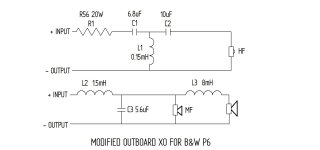 B&W P6 schem.jpg65.5 KB · Views: 165
B&W P6 schem.jpg65.5 KB · Views: 165 -
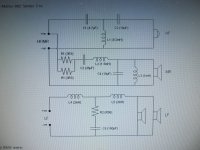 B&W Matrix 802 schem.jpg183.4 KB · Views: 137
B&W Matrix 802 schem.jpg183.4 KB · Views: 137 -
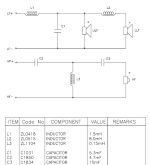 B&W Matrix 804 schem.PNG9 KB · Views: 137
B&W Matrix 804 schem.PNG9 KB · Views: 137 -
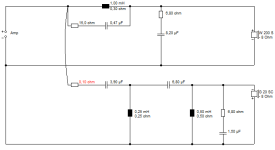 Linn Nexus Improved 2nd and 4th order filters.PNG3.8 KB · Views: 147
Linn Nexus Improved 2nd and 4th order filters.PNG3.8 KB · Views: 147 -
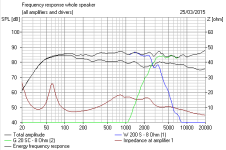 Linn Nexus Improved FR.PNG4.6 KB · Views: 140
Linn Nexus Improved FR.PNG4.6 KB · Views: 140 -
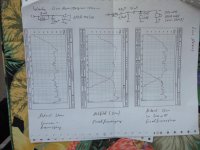 DSCF2867.jpg437.1 KB · Views: 122
DSCF2867.jpg437.1 KB · Views: 122 -
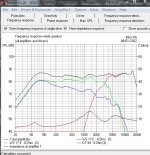 B&W P6 fr.resp.Adjusted Filter 5.6uF added.JPG76 KB · Views: 132
B&W P6 fr.resp.Adjusted Filter 5.6uF added.JPG76 KB · Views: 132 -
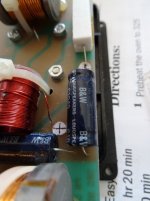 B&W P6 XO-II.JPG73.6 KB · Views: 144
B&W P6 XO-II.JPG73.6 KB · Views: 144 -
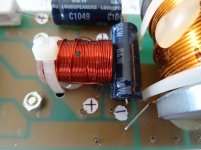 B&W P6 XO-I.JPG101.1 KB · Views: 156
B&W P6 XO-I.JPG101.1 KB · Views: 156 -
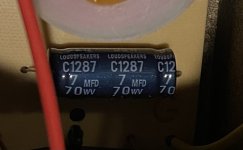 B&W 804 Matrix Crossover Network-low pass-NP elcap.jpg82.4 KB · Views: 130
B&W 804 Matrix Crossover Network-low pass-NP elcap.jpg82.4 KB · Views: 130 -
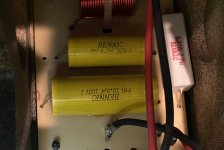 B&W 804 Matrix Crossover Network high pass foil cap.jpg346.5 KB · Views: 132
B&W 804 Matrix Crossover Network high pass foil cap.jpg346.5 KB · Views: 132 -
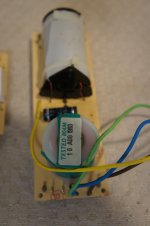 B&W 804 Matrix Crossover Network-low pass-I.jpg111.2 KB · Views: 137
B&W 804 Matrix Crossover Network-low pass-I.jpg111.2 KB · Views: 137 -
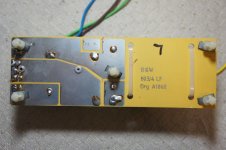 B&W 804 Matrix Crossover Network-low pass-II.jpg161.3 KB · Views: 126
B&W 804 Matrix Crossover Network-low pass-II.jpg161.3 KB · Views: 126 -
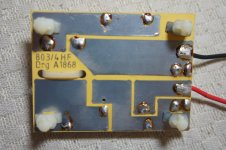 B&W 804 Matrix Crossover Network-high pass II.jpg202.9 KB · Views: 123
B&W 804 Matrix Crossover Network-high pass II.jpg202.9 KB · Views: 123 -
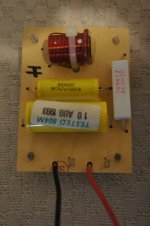 B&W 804 Matrix Crossover Network high pass.jpg165.6 KB · Views: 159
B&W 804 Matrix Crossover Network high pass.jpg165.6 KB · Views: 159 -
 B&W 804 Matrix Crossover Network-I.jpg231.9 KB · Views: 175
B&W 804 Matrix Crossover Network-I.jpg231.9 KB · Views: 175
Last edited:
under
https://www.ebay.co.uk/itm/144571606204
and
https://www.ebay.de/itm/144571606204
I have found this offer for situations with burned voice coils.
any experiences with such a re-cone procedure ?
Thanks for an advice.
P.S.: Test review from B&W P6 in German is to find in the STEREOPLAY issue 4/1995
P.S.-II P5 and P6 seems to be identical except the kind of tweeter mounting
https://www.ebay.co.uk/itm/144571606204
and
https://www.ebay.de/itm/144571606204
I have found this offer for situations with burned voice coils.
any experiences with such a re-cone procedure ?
Thanks for an advice.
P.S.: Test review from B&W P6 in German is to find in the STEREOPLAY issue 4/1995
P.S.-II P5 and P6 seems to be identical except the kind of tweeter mounting
Attachments
-
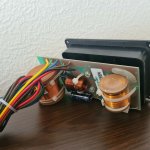 B&W P5 XO+Term.jpg297.8 KB · Views: 123
B&W P5 XO+Term.jpg297.8 KB · Views: 123 -
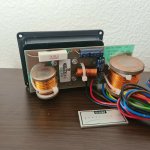 B&W P5 XO+Term-II.jpg283 KB · Views: 118
B&W P5 XO+Term-II.jpg283 KB · Views: 118 -
 B&W P5 XO+Term-III.jpg240.1 KB · Views: 139
B&W P5 XO+Term-III.jpg240.1 KB · Views: 139 -
 B&W P6-top view + invoice.jpg239.9 KB · Views: 143
B&W P6-top view + invoice.jpg239.9 KB · Views: 143 -
 B&W P6 outdoor tweeter.jpg252.9 KB · Views: 200
B&W P6 outdoor tweeter.jpg252.9 KB · Views: 200 -
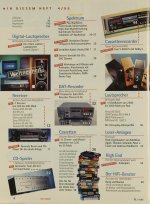 Stereoplay 4-1995-TOC.jpg216.9 KB · Views: 109
Stereoplay 4-1995-TOC.jpg216.9 KB · Views: 109 -
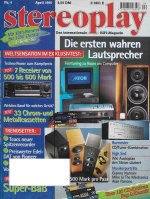 Stereoplay 4-1995.jpg794.3 KB · Views: 112
Stereoplay 4-1995.jpg794.3 KB · Views: 112 -
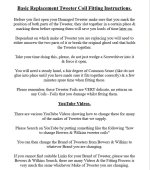 B&W P6 tweeter recone-instructions.jpg107.6 KB · Views: 127
B&W P6 tweeter recone-instructions.jpg107.6 KB · Views: 127 -
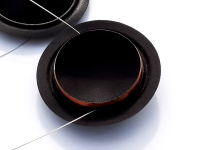 B&W P6 tweeter recone-II.png540.3 KB · Views: 149
B&W P6 tweeter recone-II.png540.3 KB · Views: 149 -
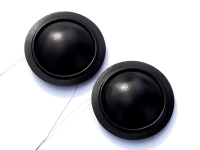 B&W P6 tweeter recone-I.png373.6 KB · Views: 192
B&W P6 tweeter recone-I.png373.6 KB · Views: 192 -
 B&W P5 front.jpg86.6 KB · Views: 124
B&W P5 front.jpg86.6 KB · Views: 124 -
 B&W P5 Term.jpg114.2 KB · Views: 103
B&W P5 Term.jpg114.2 KB · Views: 103 -
 B&W P5 front-II.jpg334.8 KB · Views: 110
B&W P5 front-II.jpg334.8 KB · Views: 110
here the part list/exploded view and the owner's manual. According this there are two different tweeter cones (and two different crossover networks) in use. Before serial No 002111 a metal dome (high pass: 6uF/10uF/0,15mH) and from serial No 002111 a plastic dome (high pass: 0R56/6uF/10uF/0,15mH). But both versions with the same ferrofluid.
B&W inform me, that replacement parts are no longer available.
B&W inform me, that replacement parts are no longer available.
Attachments
Last edited:
Various considerations regarding a repair of this B&W P6 ultimately led to finding a replacement that would, if possible, not require any changes to the crossover network. The decision was made for Monacor's DT284A friend of me want to replace the tweeter on his devices of this model with a better version - at any rate without ferrofluid.
Hiquphon's OW-1 (based on Scan Speak's nearly 55 years old model D2008) seems to be a good choice - go to
https://www.hiquphon.dk/page4.html
build in in an appropriate sphere shell.
Sonic performance of the original tweeter - which is still available in Netherlands under
https://speakerrepairshop.nl/de/hochtoener/b-w/b-w-hochtoner-fur-pm1-mit-gehause/a-4167-10000076
isn't really good - at least from my view - even not in new condition.
But even if the sound was good in new condition, it can be seen as certain that long-term stability in terms of the sound character cannot be expected.
https://www.monacor.de/produkte/components/lautsprechertechnik/hi-fi-hochtoener-/dt-284/
https://www.hifisound.de/de/Lautspr...80FFg2dkoUVhKBul9eqDwz8JjbY3ZPySjnYmCDACGB04u
....with good results regarding sonic performance.
A new housing replacement for the new tweeter was also made - see first picture.
Next step is to find out, which crossover network version is in use - maybe similar to those from second and third attachment, (found under
https://audiokarma.org/forums/index...nce-p6-question-concerning-crossover.1056967/ )
- maybe an other version.
Attachments
Last edited:
any experience with this part ?
https://eternel-vintage.com/products/enceinte-auto-vintage-boule
Maybe also suited for B&W tweeter replacement
https://eternel-vintage.com/products/enceinte-auto-vintage-boule
Maybe also suited for B&W tweeter replacement
Attachments
I've been following the thread, and try to understand which is the most appropriate tweeter replacement, WITHOUT doing any crossover work. Based on research and cross-referencing the datasheets, (chatgpt did an excellent work on that), i concluded that the Scan-Speak D2608/913000 is the most appropriate fit without changing the crossover. would like a second opinion. many thanks. I am providing photos of the cross-reference of the specs of the original tweeter for P6 with the metal cone and the comparison with the scan-speak D2608


Attachments
- Home
- Loudspeakers
- Multi-Way
- B&W P6 Tweeter replacement
